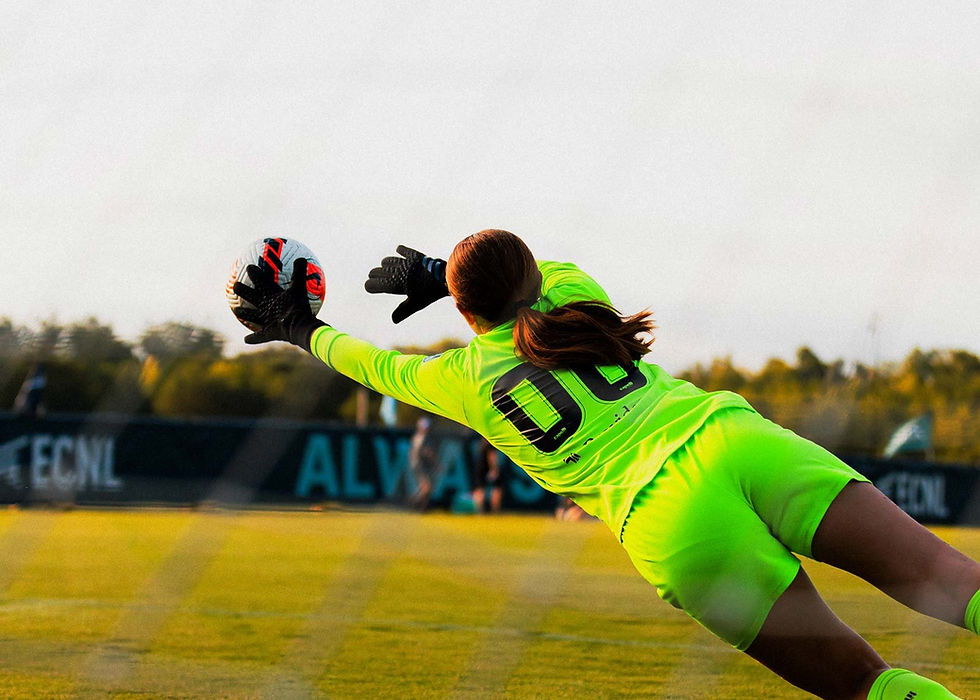Effective Communication for a GK
- Jeff Tackett

- Apr 14
- 2 min read
Updated: May 15
A successful soccer team is effective in communication. The sophistication and amount of communication will vary depending on age and skill level. In today’s modern game the goalkeeper is the lead communicator on the field. Expectations are that a goalkeeper is not only a shot stopper but also the last line of defense, first attacker, and demonstrates game maturity with decision-making, organizing, and communicating. That is a heavy burden at any age and ability level. Goalkeepers and field players are unable to communicate because of their game inexperience and the pace at which the game changes. As coaches it is our job to help keepers read the game and respond to the changes going on in front of them.
The Basics of Effective Communication:
· Defined expectations on what the keeper’s communication responsibility
entails.
· Glossary and definition of terms used by the keeper.
· Define what term is used when to insure consistency and mutual
understanding between keeper and players
· Name and Action: Who is doing what. “Steve mark 7” is more effective than
“Mark up, markup”.
· When communicating instructions have the keeper project their voice in a
clear and concise manner. Simplicity is essential.
· Project the instructions in a tone and volume appropriate to the situation.
· Be constructive
· Communicate, when necessary, rather than just to hear their voice. There is a balance between being informative and yelling too much; where a field player just tunes out the keeper.
Communication is a habit that must be formed early, just like proper goalkeeper catching techniques.
******** Foundations of Communication & Age-Appropriate Timelines *******
U-10 & under: Understand the importance of “Keeper” call.
U-11: Calling keeper with balls crossed into the box. “Away” call when the keeper is not able to challenge the ball. Communicate with defenders to “clear” the ball when under pressure.
U-12/13: Communicate directionally: “man on your left”, “Jimmy on your left”. Mark players up on set pieces. “Step players by name” or “push players up by name” to ensure players are defending and attacking as a team.
U-14/15: Begin to organize defense. Pressure, Cover, Balance. Identify immediate threat off the ball. Offer “keeper” as a pass back option to clear or maintain possession. “Step players” or “push players up” to give the keeper more room to work in, to keep the attacking team contained, and the offside consideration.
U-16: Reinforce defensive communication expectations of the keeper. Further the keeper’s understanding of team defensive and offensive responsibilities of the 4-4-2, 4-3-3, 4-5-1, man marking, zonal defending. Able to organize defenders to support defensive integrity: Pressure, Cover, and Balance.
U-17: Develop understanding of other attacking and defending formations. Confidently orchestrate the whole defense rather than just pressure, cover, and balance.
U-18: With the help of the coach, central defender, and central midfielder organize the team to respond to varying defensive and attacking formations or styles of play. Communicate constructive criticism to individuals and team.
~Jeff Tackett ~
.png)



Comments